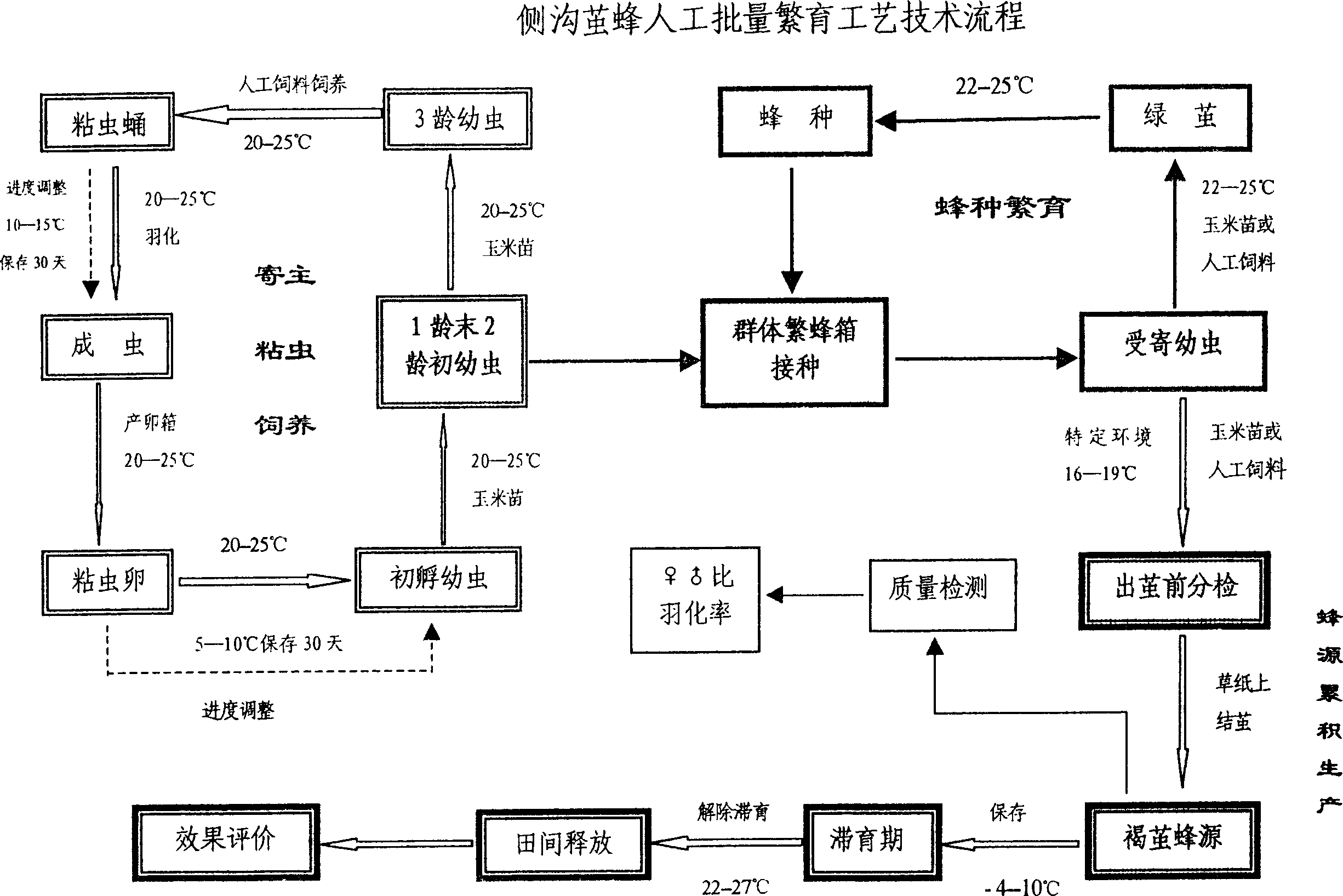Artificial reproduction method for Microplitis mediator (Haliday)
A technology of artificial breeding and ditching wasps, which is applied in animal husbandry and other fields, can solve the problems of affecting the control effect, affecting the yield and quality of bee sources, and the difficulty of pest control to reach parasitic bees and pests, etc.
- Summary
- Abstract
- Description
- Claims
- Application Information
AI Technical Summary
Problems solved by technology
Method used
Image
Examples
Embodiment approach
[0007] 1. Feeding of host armyworm:
[0008] At a temperature of 20-25°C, the late 1st instar and early 2nd instar larvae grow into 3rd instar larvae, and then feed the 3rd instar larvae with artificial feed to turn into pupae, and the pupae emerge into adults, and then the adults produce armyworm eggs, and the armyworm eggs become Newly hatched larvae, newly hatched larvae grow into late 1st and 2nd instar larvae; in order to adjust the production progress during this process, armyworm pupae can be stored at 10-15°C for a storage time of ≤30 days, and armyworm eggs can be stored in Store at 5-10°C, storage time ≤ 30 days.
[0009] 2. Breeding of bee species:
[0010] Inoculate artificially bred uniform 1-2 instar armyworm larvae into the inoculation box, and inoculate the mid-red wasp species that emerged from the developing green cocoon at a ratio of 1:20. The ratio of male to female Match 1:1. Take a small number of parasitized larvae from the produced parasitized larvae...
Embodiment 1
[0025] Embodiment 1 The artificial breeding method of the red parasitic wasp 1, the raising of the host armyworm:
[0026] At 25°C, the late 1st instar and early 2nd instar larvae grow into 3rd instar larvae, and then feed the 3rd instar larvae with artificial feed to become pupae, pupae emerge into adults, and then adults produce armyworm eggs, which become newly hatched Larvae, newly hatched larvae grow into late 1st and 2nd instar larvae.
[0027] 2. Breeding of bee species:
[0028] Insert 1,000 artificially bred uniform 1-2 instar armyworm larvae into the inoculation box, and insert 100 species of B. chinensis that emerged from the developing green cocoon at a ratio of 1:20. head, the ratio of male to female is 1:1. Take 100 parasitized larvae among the generated parasitized larvae, raise them to cocoons at 25° C. under a 12-hour photoperiod for 8 days, and then stimulate cocoons at 25° C. to produce bee species.
[0029] 3. Breeding of diapause bee sources:...
PUM
 Login to View More
Login to View More Abstract
Description
Claims
Application Information
 Login to View More
Login to View More - R&D
- Intellectual Property
- Life Sciences
- Materials
- Tech Scout
- Unparalleled Data Quality
- Higher Quality Content
- 60% Fewer Hallucinations
Browse by: Latest US Patents, China's latest patents, Technical Efficacy Thesaurus, Application Domain, Technology Topic, Popular Technical Reports.
© 2025 PatSnap. All rights reserved.Legal|Privacy policy|Modern Slavery Act Transparency Statement|Sitemap|About US| Contact US: help@patsnap.com

